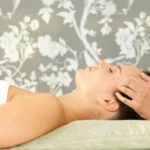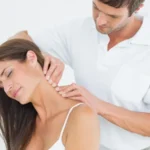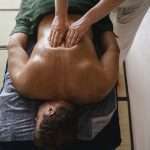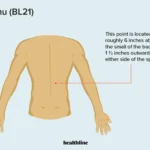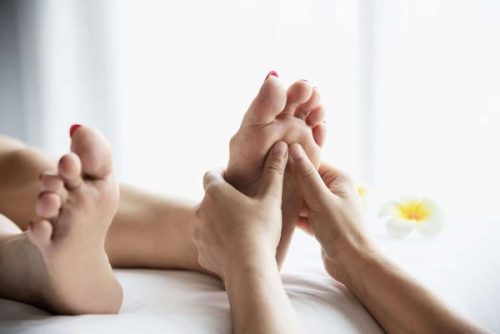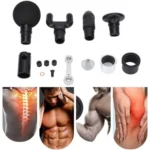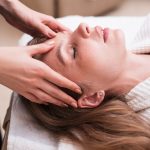Are you looking for a way to relax and unwind? If so, learning how to give yourself a relaxing head and neck massage is a great way to do just that. This article will provide you with step-by-step instructions on how to massage your head and neck to relieve tension, reduce stress, and promote overall relaxation. With a few simple techniques and a bit of practice, you’ll be able to give yourself a soothing massage anytime you need to relax and unwind.
Benefits of Head and Neck Massage
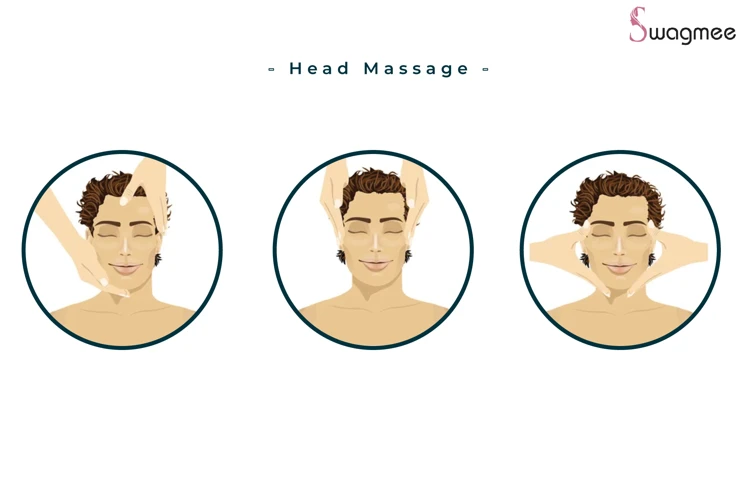
- Reduces Stress – Head and neck massage helps to relax the tense muscles in the head and neck, releasing stress and tension in the body.
- Promotes Relaxation – Massaging the head and neck can help to induce a state of deep relaxation, which can help to reduce stress levels and improve overall wellbeing.
- Improves Circulation – By applying pressure to the scalp and neck area, the circulation of blood is increased, bringing oxygen and nutrients to the cells in the head and neck.
- Relieves Tension Headaches – Massaging the neck and head can help to relieve tension headaches caused by tight muscles in the neck and head.
- Enhances Cognition – Head and neck massage can help to improve cognitive function by increasing blood flow to the brain, which can help to improve focus, concentration, and memory.
Head and neck massage is a great way to relax, reduce stress and tension, and improve circulation. Learning how to massage head and neck can help to provide relief from tension headaches and enhance cognitive function.
Preparation for Massage

| Steps | Instructions |
|---|---|
| 1 | Set Your Environment: Choose an area that is comfortable and quiet, away from any distractions. You may want to light some scented candles or diffuse essential oils for a soothing atmosphere. |
| 2 | Gather Supplies: Collect a few items you may need for your massage, such as massage oil, lotion, or a towel. If you have a massage wand, use it, as it can do wonders for relieving tension in your neck and head. |
| 3 | Prepare Your Hair: Gently brush your hair to remove any tangles and then style it in a way that is comfortable for you. If you have long hair, it’s best to keep it out of the way, either with a headband or a ponytail. |
| 4 | Choose Comfortable Clothing: Pick out clothes that are loose-fitting and comfortable. You don’t need to wear anything special for a head and neck massage, but it’s important to make sure that your clothes don’t restrict your movements. |
Massaging the Head
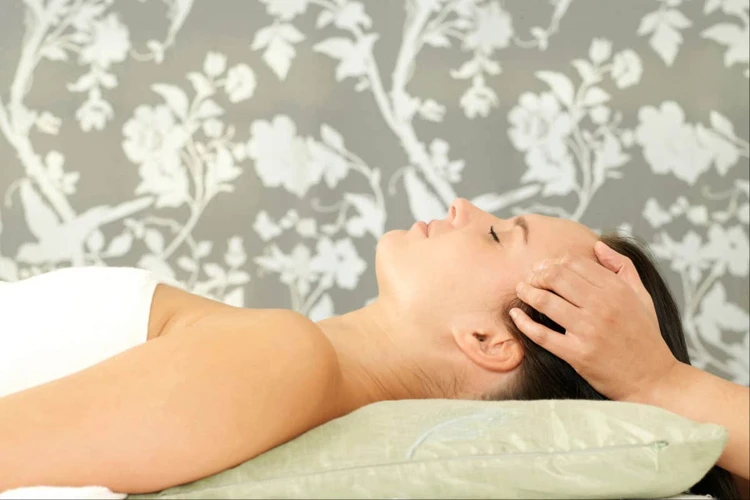
Forehead
Gently knead the forehead with the tips of your fingers. Start from the middle of the forehead and move outward towards the temples. Repeat this motion several times.
Temples
Use your thumbs to apply pressure to the temples. Here, you can use a circular motion to massage the area.
Scalp
Using your fingertips, circularly massage the entire scalp in a gentle motion.
Neck
Using the tips of your fingers and your thumbs, massage the base of the neck in a circular motion. Work your way up the neck and to the base of the skull, applying gentle pressure as you go.
Massaging the Neck
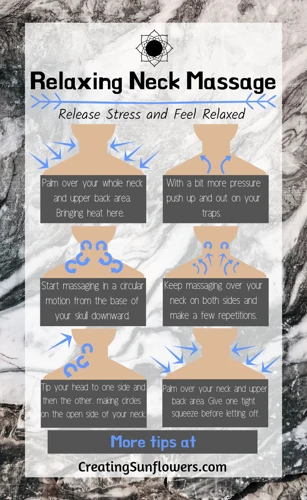
Back of the Neck
Using your fingertips, start at the base of your neck and massage in small, circular motions. Move up the neck towards the skull, and then back down again. Apply gentle pressure for a few seconds at a time and then move on to the next area.
Front of the Neck
Start at the base of your neck and massage in upward strokes. Gently pinch the skin with your thumb and forefinger. Slowly move up towards your chin and then back down again. Repeat several times.
Finishing the Massage
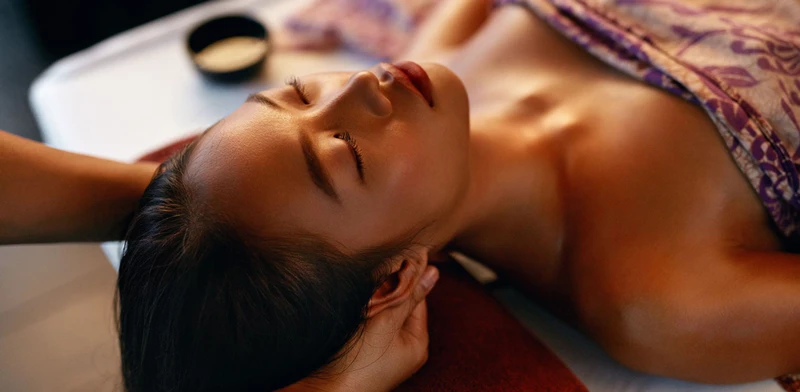
Once you have completed the massage, it is important to relax for a few minutes. During this time, it is important to focus on your breathing. Take several slow and deep breaths. This will help your body relax and your muscles to return to their normal state.
When you are ready, slowly move your hands back to the starting position. Take one last deep breath, and then slowly open your eyes.
It is also important to remember to drink plenty of water after your massage. This will help to flush out the toxins that have been released during the massage and will help your body to stay hydrated.
You should now feel relaxed and have a better sense of well-being.
Possible Risks

Incorrect Technique: Applying too much pressure on the wrong areas can cause pain, discomfort, or injury. It is important to be aware of the bones and other structures in the head and neck, and to use gentle pressure.
Allergies: If you have an allergy to essential oils, lotions, or other products, they should not be used during a head and neck massage.
Headaches: A head and neck massage can cause headaches if too much pressure is applied, or if you have a pre-existing headache or migraine.
Blood Pressure: People with high or low blood pressure should proceed with caution when receiving a head and neck massage, as it can cause a sudden drop or rise in blood pressure.
Infections: If you have an infection, such as an ear infection, a head and neck massage should be avoided until the infection has been treated.
Medical Conditions: If you have a medical condition, such as cancer, that could be affected by a head and neck massage, you should consult your physician or healthcare provider before proceeding.
Tips and Suggestions
- Choose the right oil: Choose an oil that is suitable for your skin type and suits the purpose of the massage. This can be a light massage oil or a special blend of essential oils.
- Start with gentle strokes: Start with gentle strokes and gradually increase the pressure while massaging.
- Listen to your body: Pay attention to the signals your body is sending you and adjust your massage accordingly.
- Take your time: Take your time to enjoy the massage and relax.
- Use proper technique: Use proper technique to ensure the massage is effective and does not cause any pain or discomfort.
- Be consistent: Try to be consistent with your massages to ensure the best results.
Frequently Asked Questions
What Type of Massage Oil Should I Use for a Head and Neck Massage?
It is important to choose the right massage oil for your head and neck massage. Opt for natural, lightweight oils that won’t leave a greasy residue, such as jojoba oil, almond oil, coconut oil, and grapeseed oil. These oils are easily absorbed and also provide a gentle and soothing effect. Alternatively, you can also use pre-mixed massage oil blends. Make sure to do a patch test on your skin before using the oil to check for any adverse reactions.
How Often Should I Give Myself a Head and Neck Massage?
A head and neck massage should be done at least once a week for best results. The massage should be done for at least 10-15 minutes for the best relaxation and tension relief. People who suffer from chronic neck and shoulder pain should receive the massage more often, such as 2-3 times per week. Regular massage can help reduce pain, improve posture, and reduce stress.
Is a Head and Neck Massage Beneficial for Everyone?
Yes! A head and neck massage is beneficial for everyone and can offer a number of benefits such as:
- Reduced stress and tension
- Improved circulation
- Reduced pain and inflammation
- Increased relaxation and well-being
Head and neck massage can also help to improve the function of the body’s lymphatic system, which helps to remove toxins and waste products from the body. It can also help to reduce the symptoms of headaches, migraines, and other tension-related issues. In addition, it can improve mental clarity and focus, as well as enhance the quality of sleep.
Head and neck massage is also a great way to relax and unwind after a long day. It can help to reduce stress and tension, as well as improve overall relaxation and well-being. Many people find that giving themselves a head and neck massage is a great way to relax and unwind after a stressful day.
Overall, head and neck massage is beneficial for everyone, and can offer a number of health benefits. It is a great way to relax and unwind, as well as to improve circulation, reduce stress, and improve mental clarity and focus.
How can I determine the right amount of pressure to use during a head and neck massage?
Start gently: Start with light pressure and gradually increase the pressure if it feels appropriate. If the massage feels uncomfortable, reduce the pressure. You should never feel pain during a massage.
Listen to your body: Pay attention to your body’s response and adjust the pressure accordingly. If it feels too intense, reduce the pressure. If it feels too light, increase the pressure.
Communicate: Ask the person receiving the massage for feedback. If you are giving yourself the massage, take a few moments to check in with yourself and see how the pressure feels.
Go slow and steady: Adjust the pressure slowly so that the person can get used to the sensation. If you increase the pressure too quickly, it may feel overwhelming.
What techniques should I use during a head and neck massage?
- Firm Stroking: Use your fingertips to lightly stroke the neck and head in a firm, steady motion. This will help to relax the muscles and relieve tension.
- Kneading: Place your palms on your neck and head and gently knead the muscles in a circular motion. This will help to reduce stress and tension in the area.
- Friction: Use your fingertips to apply pressure to the neck and head in a circular motion. This will help to loosen up tight muscles and reduce pain.
- Releasing: Place your hands on the neck and head and gently pull in an outward motion. This will help to release any built-up tension in the area.
- Tapping: Use your fingertips to lightly tap the neck and head in a repetitive pattern. This will help to stimulate circulation and relieve any built-up tension.
Conclusion
A self-massage for the head and neck is a great way to reduce tension and relax. Using gentle strokes with the fingertips and knuckles, focusing on the scalp, temples, forehead, neck and shoulders, can help to relieve headaches, stress, and promote overall wellbeing. The best thing about this massage is that it can be done anywhere, anytime and tailored to suit your individual needs.
References
- Mayo Clinic: Massage: Get in touch with its many benefits
- Neck and Shoulder Pain Reduction Through Self-Massage: A Randomized Controlled Trial
- Wikipedia: Massage



